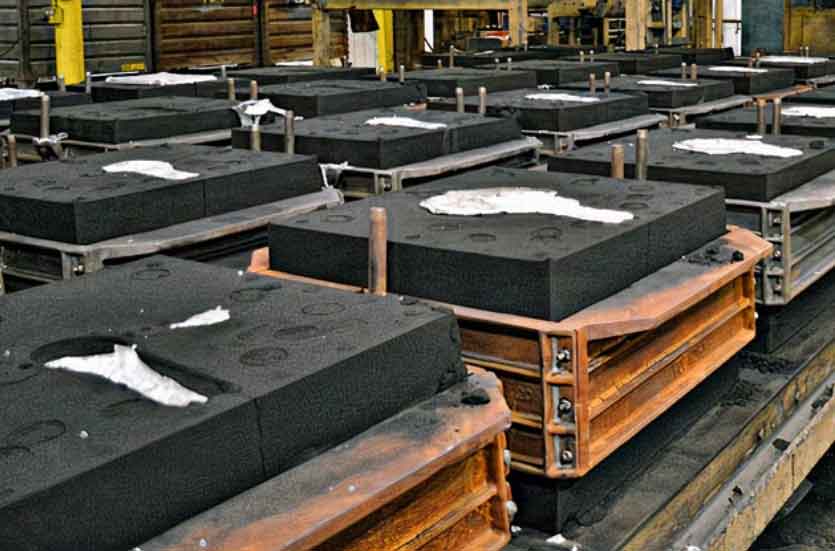
Resin sand casting plays a crucial role in enhancing efficiency and productivity in foundries. By leveraging the advantages of resin sand casting, foundries can streamline their processes, optimize resource utilization, and improve overall productivity. Here are some key ways in which resin sand casting enhances efficiency and productivity in foundries:
- Reduced Mold Preparation Time: Resin sand casting eliminates the need for traditional pattern-making and mold preparation processes, which can be time-consuming. With resin sand casting, 3D-printed patterns or other rapid prototyping techniques are used, significantly reducing mold preparation time. This enables foundries to accelerate their production cycles and meet tighter deadlines.
- Faster Molding and Core-Making: Resin sand casting allows for faster molding and core-making processes compared to traditional methods. The use of resin binders eliminates the need for drying or curing time, allowing molds and cores to be produced more rapidly. This increased speed translates into shorter lead times and improved production efficiency.
- Improved Mold Reusability: Resin sand molds can be reclaimed and reused multiple times, reducing the need for continuously producing new molds. This enhances efficiency by minimizing material waste and reducing the time and cost associated with mold preparation for subsequent casting runs.
- Enhanced Casting Quality and Yield: Resin sand casting offers good dimensional accuracy, surface finish, and mold stability, resulting in high-quality castings. The ability to produce near-net shape castings minimizes the need for extensive post-casting machining, reducing time and costs. Additionally, the use of advanced simulation software helps optimize gating and risering systems, reducing casting defects and improving yield rates.
- Automation and Robotics: Resin sand casting can be integrated with automation and robotics systems, enhancing efficiency and productivity. Automated systems can handle tasks such as mold handling, sand preparation, pouring, and post-casting operations. This reduces manual labor, improves process consistency, and increases throughput.
- Real-time Monitoring and Quality Control: Resin sand casting can incorporate real-time monitoring and quality control systems to ensure consistent casting quality. Sensors and monitoring devices can track process parameters such as temperature, humidity, and pressure, allowing for immediate adjustments and proactive defect prevention. This results in improved product quality and reduces the need for rework or scrap.
- Lean Manufacturing Principles: Resin sand casting aligns well with lean manufacturing principles. By eliminating unnecessary steps, reducing material waste, and optimizing process flow, foundries can implement lean principles to improve overall efficiency. This includes techniques such as value stream mapping, 5S organization, and continuous improvement methodologies.
- Employee Training and Skill Development: To fully leverage the efficiency and productivity benefits of resin sand casting, investing in employee training and skill development is crucial. Training programs can enhance the knowledge and expertise of foundry personnel, enabling them to optimize the resin sand casting process, identify and resolve issues efficiently, and drive continuous improvement initiatives.
By embracing resin sand casting and implementing these efficiency-enhancing strategies, foundries can optimize their operations, reduce costs, improve casting quality, and ultimately enhance overall productivity. Resin sand casting offers foundries a competitive edge by combining the benefits of advanced technology, faster production cycles, and higher-quality castings.
